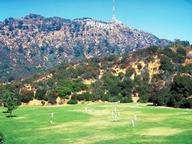Quiz Answer Key and Fun Facts
1. The host of the fourth Academy Awards ceremony was an Englishman who first came to America in 1908 at the age of 37, and only acted in his first film in 1915 at the age of 44, beginning a 30-year film career. Who was he?
2. The winner of the Academy Award for Best Actor went to this man for his role as Stephen Ashe in the movie "A Free Soul" (1931). You might remember him better for his later role as the villainous Henry Potter in the 1946 film "It's a Wonderful Life."
3. Only the fourth Academy Awards ceremony, and a third Best Actress Oscar went to a Canadian-born actress. She did not begin her film career until 1910, at the age of 42, and her career was cut short when she died of cancer in 1934. Who was this actress, who won the Oscar for her role in "Min and Bill" (1930)?
4. The Oscar for Best Story went to a tale set in World War I and centered around a Royal Flying Corps base. Which film (and writer(s)) won?
5. The winning film for Best Adapted Screenplay went to "Cimarron" (1930). The author of the story was also known for her novels "Show Boat" and "Giant," which were both adapted for the screen in 1927 and 1956 respectively. Who was the lady who wrote "Cimarron"?
6. The award for Best Sound Recording did not go to any individual or to a specific film. Rather, it was presented to a sound department. Which company (and sound department), known for its mountain and stars logo, won the Oscar?
7. Best Cinematography was the category that earned this film its only Oscar nomination and subsequent win. Also known as "____, a Story of the South Seas," the movie had two parts to it: "Paradise", and "Paradise Lost". What film (and cinematographer) won?
8. What award(s) did the Academy of Motion Picture Arts and Sciences present for the first time at the fourth Academy Awards ceremony?
9. The Oscar for Best Director went to Norman Taurog for his work on a film based on a comic strip character. What was the movie?
10. The movie that took home the Oscar for Best Picture was a blockbuster that took $1.5 million to make, needed more than 5,000 extras, and used 28 cameramen along with numerous assistants and photographers to properly capture its epic scenes. Which film won the Oscar?
Source: Author
reedy
This quiz was reviewed by FunTrivia editor
Nannanut before going online.
Any errors found in FunTrivia content are routinely corrected through our feedback system.


